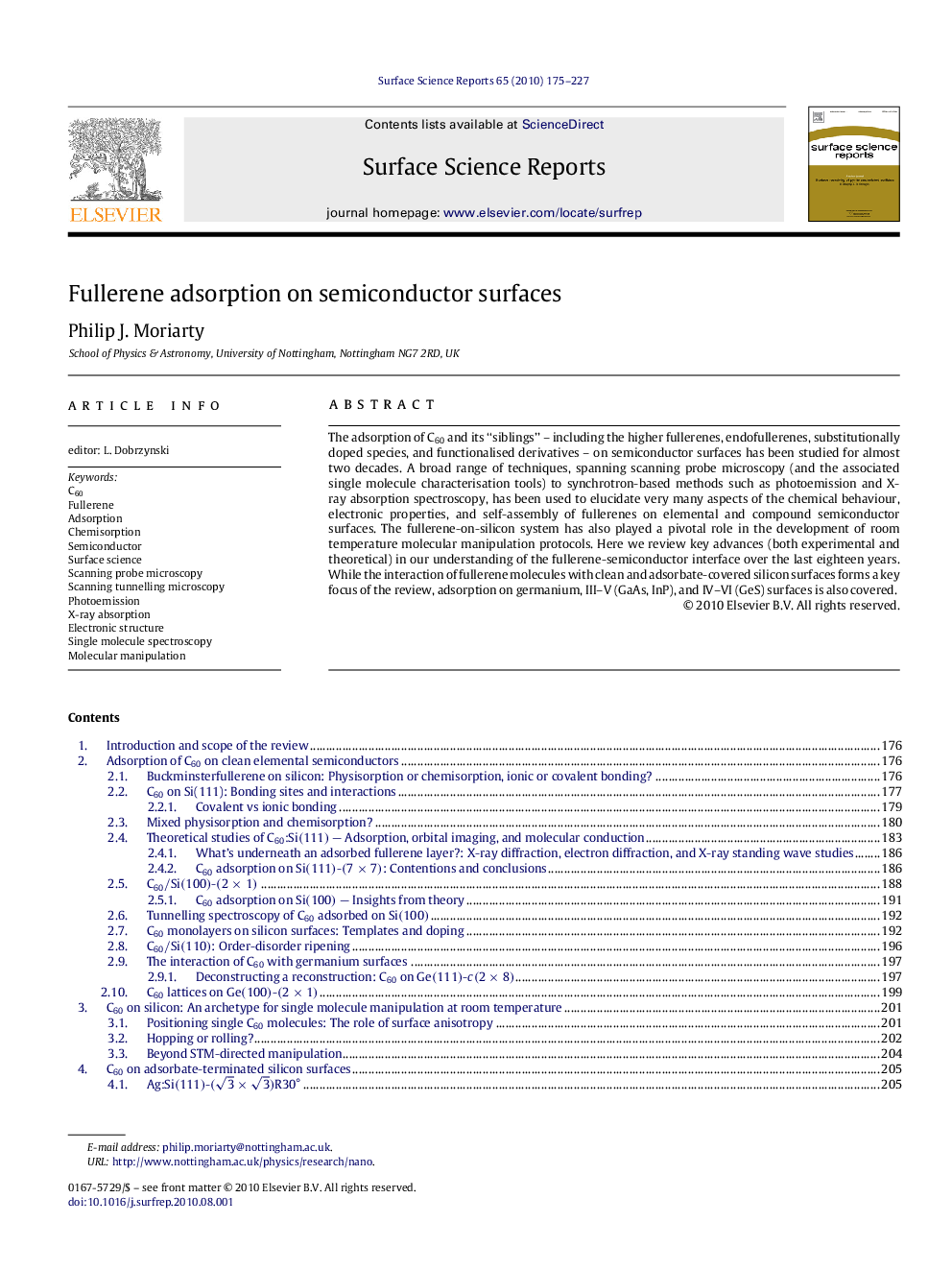| Article ID | Journal | Published Year | Pages | File Type |
|---|---|---|---|---|
| 7845371 | Surface Science Reports | 2010 | 53 Pages |
Abstract
The adsorption of C60 and its “siblings”-including the higher fullerenes, endofullerenes, substitutionally doped species, and functionalised derivatives-on semiconductor surfaces has been studied for almost two decades. A broad range of techniques, spanning scanning probe microscopy (and the associated single molecule characterisation tools) to synchrotron-based methods such as photoemission and X-ray absorption spectroscopy, has been used to elucidate very many aspects of the chemical behaviour, electronic properties, and self-assembly of fullerenes on elemental and compound semiconductor surfaces. The fullerene-on-silicon system has also played a pivotal role in the development of room temperature molecular manipulation protocols. Here we review key advances (both experimental and theoretical) in our understanding of the fullerene-semiconductor interface over the last eighteen years. While the interaction of fullerene molecules with clean and adsorbate-covered silicon surfaces forms a key focus of the review, adsorption on germanium, III-V (GaAs, InP), and IV-VI (GeS) surfaces is also covered.
Keywords
Related Topics
Physical Sciences and Engineering
Chemistry
Physical and Theoretical Chemistry
Authors
Philip J. Moriarty,
